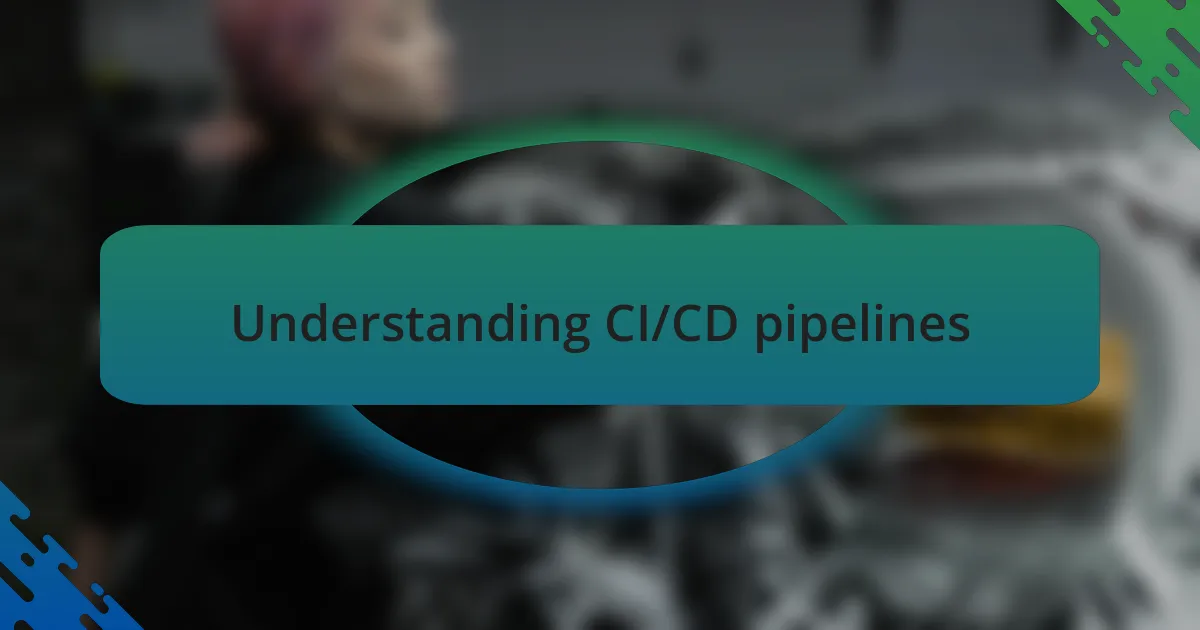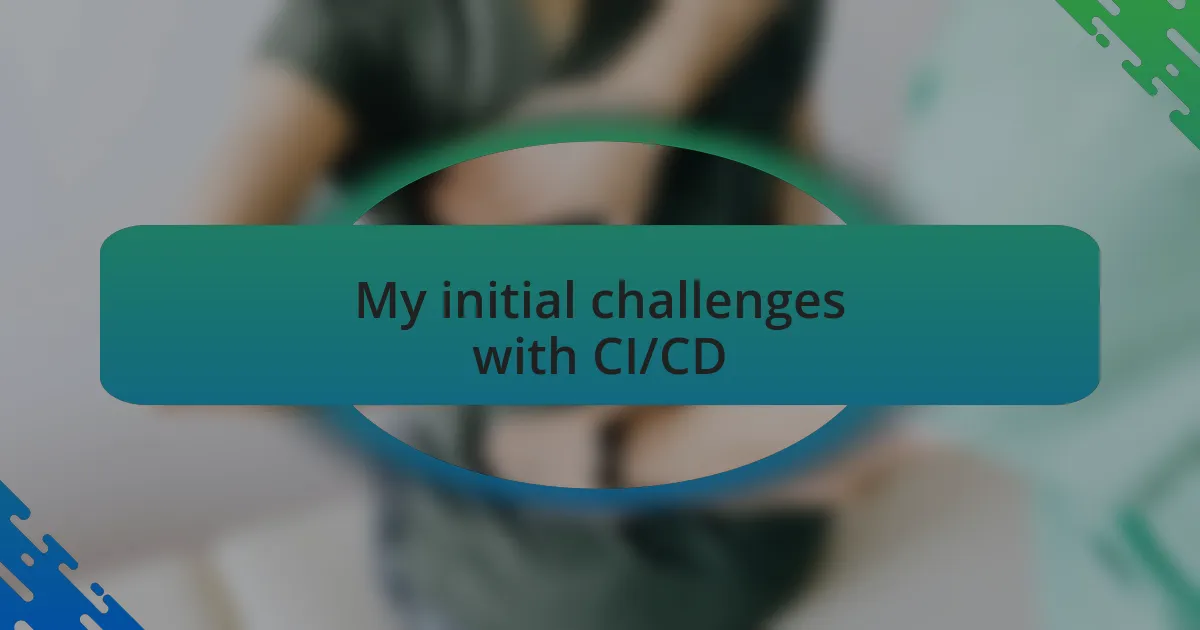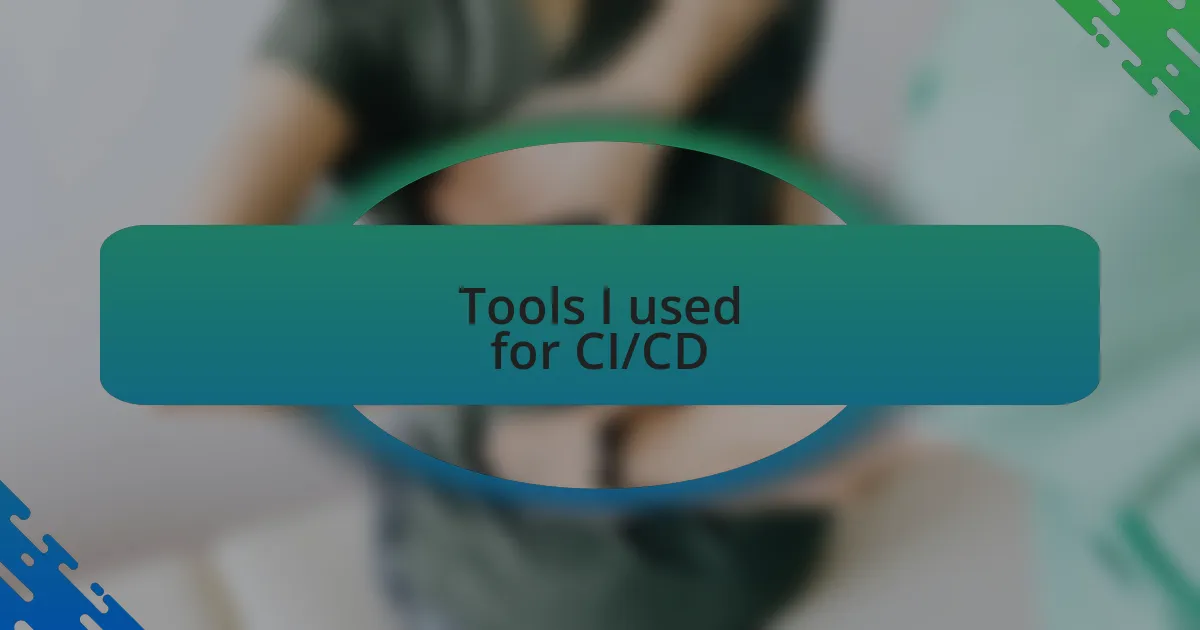Key takeaways:
- CI/CD pipelines enhance collaboration and automate testing, leading to quicker feedback and reduced deployment times.
- Initial challenges include tool setup, integrating legacy systems, and gaining team buy-in, highlighting the need for both technical skills and a mindset shift.
- Key tools for CI/CD include Jenkins for flexibility, Docker for dependency management, and Kubernetes for orchestration, each contributing to a robust deployment ecosystem.
- Best practices emphasize automating tests and deployments, maintaining strong feedback loops, and implementing effective version control strategies to streamline the CI/CD process.

Understanding CI/CD pipelines
When I first encountered CI/CD pipelines, I felt a mix of excitement and confusion. Continuous Integration and Continuous Deployment are like the backbone of modern software development, providing a framework that automates the testing and release processes. Can you imagine how much easier it becomes to catch bugs earlier in the development cycle?
Diving deeper into CI/CD, I realized it’s not just about speed; it’s about creating a culture of collaboration. Each commit triggers an automated sequence of tests that give immediate feedback, transforming the way teams interact. I remember one project where this real-time feedback loop dramatically reduced our deployment time. It’s fascinating how much impact the right processes can have on team dynamics.
There’s also an emotional aspect to consider – the relief that comes with knowing that quality checks happen automatically. It lets developers focus on problem-solving rather than worrying about whether a new feature will break the build. Have you felt that weight lift when a deployment goes smoothly because of a well-implemented CI/CD pipeline?

My initial challenges with CI/CD
Initially, I faced quite a few challenges while trying to implement CI/CD in my projects. One major hurdle was setting up the automation tools correctly. I remember spending days troubleshooting configurations, feeling overwhelmed by the myriad of options available in different CI/CD platforms. It was frustrating, and there were times I questioned whether this was worth the effort.
Then, I encountered the issue of integrating legacy systems. Many times, I felt nostalgic about the simplicity of manual deployments. There was something comforting about the traditional way, but I quickly realized that it was also slowing us down. Each time I tried to bring older code into the CI/CD fold, it resulted in compatibility issues that led to setbacks. Have you ever felt that tug-of-war between wanting innovation and the comfort of familiarity?
Furthermore, I struggled with getting buy-in from my team. It felt like an uphill battle trying to convince everyone of the CI/CD benefits. I vividly recall a meeting where I presented the value of these pipelines, only to see skepticism in my colleagues’ eyes. Their concerns about the learning curve and the fear of change resonated with my own hesitations at the start. It’s interesting how overcoming such barriers often requires not just technical expertise but also a shift in mindset.

Tools I used for CI/CD
When I began working with CI/CD pipelines, I found myself gravitating towards tools like Jenkins and GitLab CI. Jenkins, in particular, stood out for its flexibility; I remember the thrill of customizing pipelines to match the unique needs of my projects. Each successful build felt like a small victory, reinforcing my decision to embrace automation. Have you ever experienced that rush when everything works seamlessly after days of effort?
Alongside Jenkins, I dabbled with Docker for containerization. The challenge of managing dependencies was a constant battle, and Docker offered a clean solution. I still recall the moment I ran my first containerized application—it was like opening a door to a more organized world where I could replicate environments effortlessly. Does the simplicity of portability make you rethink your deployment processes as it did for me?
In addition to these, I explored orchestration tools like Kubernetes. The learning curve was steep and frustrating; I often felt like I was climbing a mountain with my CI/CD practices. However, the satisfaction of scaling applications dynamically made all the struggles worthwhile. It’s fascinating how each tool has its own quirks, yet they all work together to create a robust deployment ecosystem. Have you ever figured out a tool’s intricacies only to discover another that complements it perfectly?

Best practices for implementing CI/CD
When implementing CI/CD, one of the best practices I learned was to automate everything possible. Initially, I underestimated the value of automating tests and deployment processes. But after a few late-night debugging sessions, I recognized that automation not only reduces human error but also accelerates delivery times. Have you ever noticed how much smoother everything runs when repetitive tasks are handled by the machine?
Another key insight is the importance of maintaining a strong feedback loop. I vividly remember a time when failing to set up notifications about build failures cost my team precious hours. Ensuring that every team member receives timely alerts keeps everyone on the same page. How often do you check your build status after a push? Integrating monitoring tools can make sure you’re never left in the dark about your application’s health and performance.
Finally, I can’t emphasize enough the necessity of version control practices. Initially, I thought versioning was just an afterthought, but I soon discovered it shapes the entire CI/CD process. Keeping branches organized and consistent allowed me to experiment freely without jeopardizing the main codebase. It’s reassuring to know that with the right versioning strategy, I can evolve my project while maintaining stability. What strategies do you use to ensure your version control remains tidy and effective?